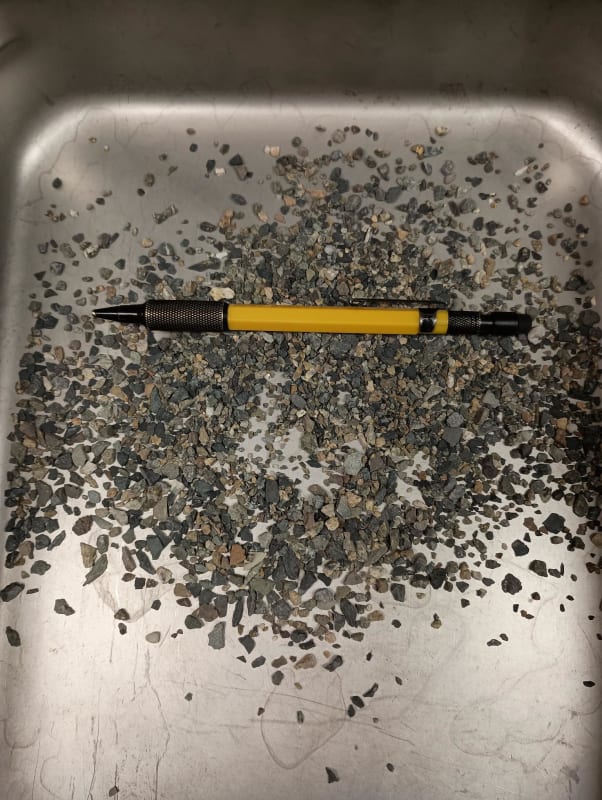Anyone have experience with ASTM C142 Clay Lumps & Friable Particles test on fine aggregates?
The procedure requires aggregate particles of size passing #4 and retained on #16 to be individually "squeezed and rolled between thumb and forefinger to attempt to break the particle into smaller sizes. Do not use the fingernails to break up the particles or press particles against a hard surface or each other."
I am finding it essentially impossible to perform the test due to the fact many of the particles that pass a #8 and are retained on a #16 are too small to practically handle individually as required by the ASTM procedure. If the procedure is modified and multiple particles are handled simultaneously they subsequently roll against each other resulting in greater loss and potentially failing results.
Of note, the project we are currently evaluating the material source for requires a loss of less than 0.3% for ASTM C142. To me this is too strict of a specification for this test procedure that lists the acceptable range as 1.7% for tests run on the same material by different laboratories but this is what we are dealing with so I am curious if anyone has experience with this procedure and is able to provide comments.
Thanks
The procedure requires aggregate particles of size passing #4 and retained on #16 to be individually "squeezed and rolled between thumb and forefinger to attempt to break the particle into smaller sizes. Do not use the fingernails to break up the particles or press particles against a hard surface or each other."
I am finding it essentially impossible to perform the test due to the fact many of the particles that pass a #8 and are retained on a #16 are too small to practically handle individually as required by the ASTM procedure. If the procedure is modified and multiple particles are handled simultaneously they subsequently roll against each other resulting in greater loss and potentially failing results.
Of note, the project we are currently evaluating the material source for requires a loss of less than 0.3% for ASTM C142. To me this is too strict of a specification for this test procedure that lists the acceptable range as 1.7% for tests run on the same material by different laboratories but this is what we are dealing with so I am curious if anyone has experience with this procedure and is able to provide comments.
Thanks

